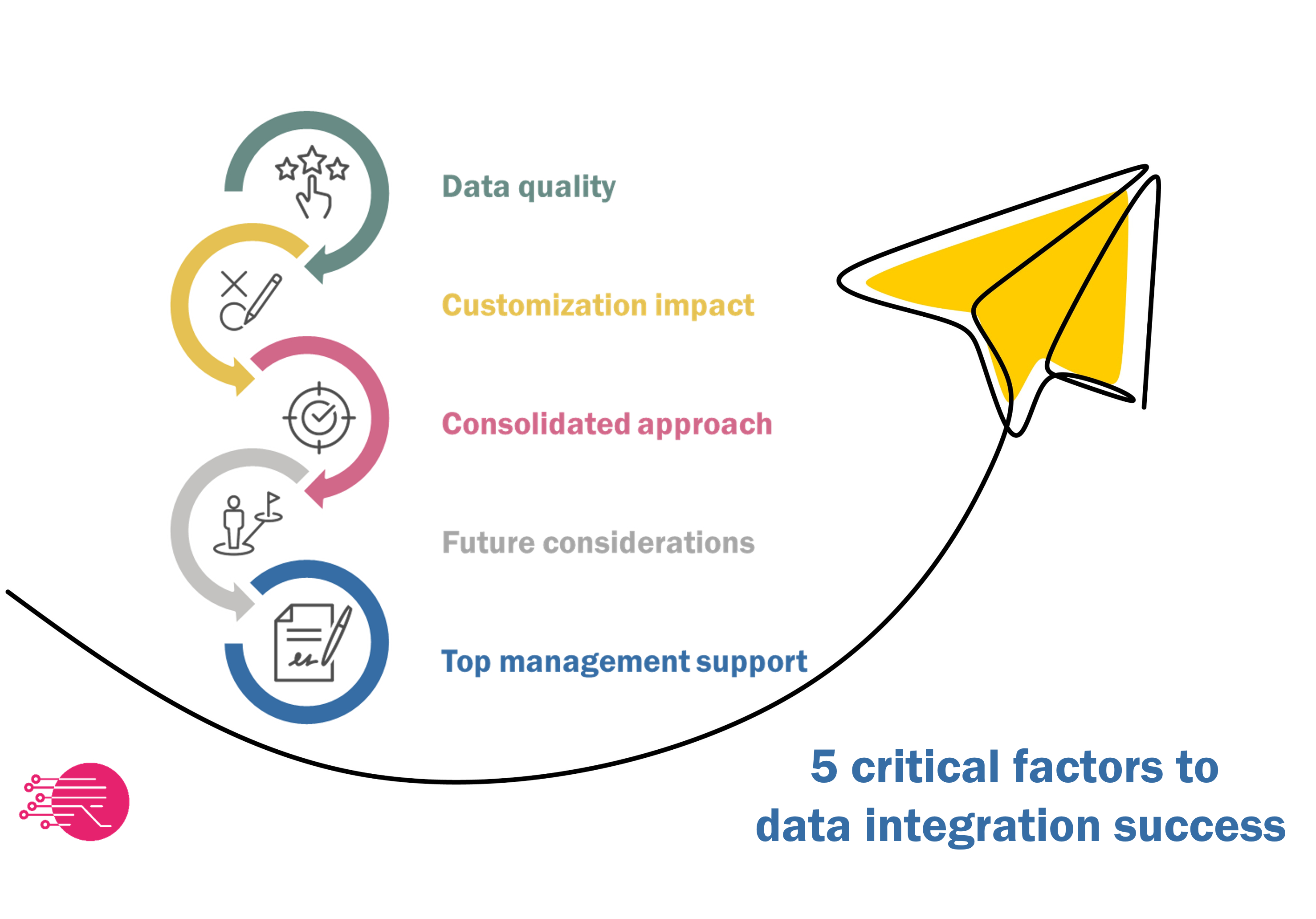What Are the Success Factors for Continuous Integration
The process of integrating disparate data from different sources (internal or external) has become more complex in the past few years. Companies handle an increasingly large volume of data every day. And the job does not get any simpler as new potential data sources continue to emerge. There are of course data integration systems that offer the possibility to connect systems and synchronize data. Organization leaders worldwide are looking for strong data integration platforms that can take care of their data integration needs. Finding a solution that is robust and proven is vital to ensure the success of a project. And today, it is even possible. However, the full success of data integration projects does not only depend on the choice of data integration software. As for any project, you will have to define what the success criteria are - and they will have to be specific to your organization. As a starting point, you can use these most common success criteria to guide you. With the emergence of Big Data, data lakes and huge data warehouses, data quality has become a substantial challenge for data-driven organizations. There are many benefits to automated data flows: However, any data integration job can be compromised by poor data quality. To put it bluntly, if you put garbage in one end, you will get nothing but garbage out at the other end. Data integration projects without a company-wide focus on data quality before, during and after the data integration implementation project will inevitably fail. Good data quality ensures full user-adoption and is consequently vital to the success of your data integration project. Give your users poor data quality and they will start to distrust data and will go back to old, unproductive processes. All the best data integration projects have a dedicated data quality champion. Software integration does not become easier when systems have been heavily customized. Today, many systems and applications come out-of-the-box with role-tailored functionality. Yet, most implementation projects include extra customization and development efforts to support enterprise-, division- or user-specific working processes and habits. This can result in hundreds of custom modules or features; literally a maintenance and upgrade nightmare. Most importantly, it is also quite a challenge when you have to connect systems and sync data. In order to integrate data from multiple sources, some choose to create a multitude of point-to-point custom integration scripts without a common direction. This can prove to be difficult and troublesome in the long run. Such an approach can be doomed to fail to deliver the desired business critical single unified view of data. Data sets must be synchronized in an automated and reliable manner across all platforms for a company to have one version of the truth. Without a consolidated approach, errors caused by inconsistent data and manual data will be costly and disrupt business activities. Many ERP or CRM vendors have developed a one-off integration between systems for their customers. Some companies have done it for themselves. This might seem as a good idea in the beginning as they have a good understanding of the company's processes and data models. However, this can prove to be a mistake in the long run. Why? Because in reality, these integration solutions are rarely developed with a full long-term future consideration. What will happen when the integrated systems get upgraded? What if you wish to extend the use of your data integration tool and integrate with other systems? Your application integration solution should be future proof and keep being used when the integration constellation changes. Custom-made interfaces generally require development, which makes upgrades and maintenance less flexible and more expensive. Pre-built connectors like the RapidiConnector make sure that you can add new data integration processes as your business grows or changes. It can easily integrate your on-premise or cloud applications to give you a unified view of your enterprise data. Data management can be a touchy issue and some divisions of your company might believe that they own the data in their part of the system. This can lead to tensions as some are reluctant to allow others access to their part of the business application. They will not let others access or change what they consider to be "their" critical business data. In such a situation, broad executive support is a must-have. Although IT has a leading part in your data integration project, it would be a huge mistake not to involve more of your executives. Executive-level buy-in drives cooperation with data owners, user adoption and is therefore vital. A data integration project never affects IT only. It has an impact broadly in an organization. A data integration project is about unifying and sharing data throughout an organization to improve and automate processes. This means that all the departments that are using the data should have a voice in the project. For example, the best CRM-ERP integration projects usually involve a CIO. or IT director. They also include CEO-level support and involvement of Sales and Marketing top management. Too often, data integration has been associated with complex, slow and frustrating projects. Software integration projects are said to inevitably imply delays and endless deployment curves. It does not have to be the reality. Data integration projects should be easy and fast. Data integration solutions should be intuitive and robust. With solutions like RapidiOnline and the use of pre-configured templates, data integration can actually be made quite simple and straight-forward.
1. Make sure you have good data quality
2. Weigh the impact of system customizations
3. Adopt a consolidated approach
4. Take future versions into consideration
5. Ensure top management support
Make your data integration project a success
gibsonhishismand85.blogspot.com
Source: https://www.rapidionline.com/blog/critical-factors-to-successful-data-integration
0 Response to "What Are the Success Factors for Continuous Integration"
Publicar un comentario